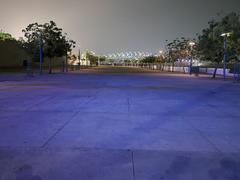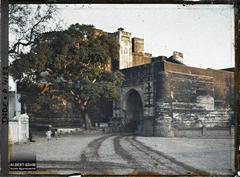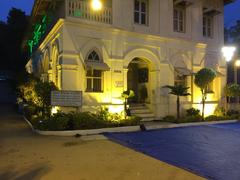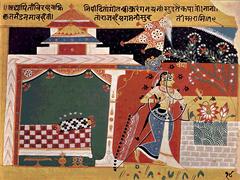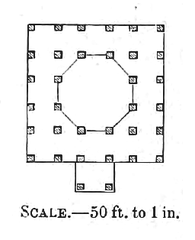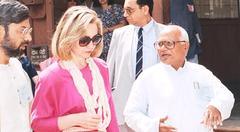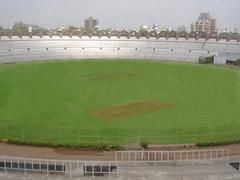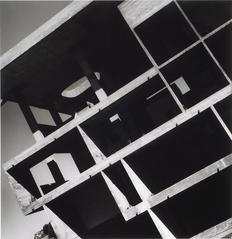Visiting Sardar Vallabhbhai Patel National Memorial: History, Tickets, and Tips
Publication Date: 16/08/2024
Introduction to Sardar Vallabhbhai Patel National Memorial
The Sardar Vallabhbhai Patel National Memorial, located in the historical Moti Shahi Mahal in Ahmedabad, Gujarat, is a significant tribute to one of India’s most revered leaders. This memorial is not just a museum but a comprehensive repository of India’s rich history and the pivotal role played by Sardar Vallabhbhai Patel in shaping the nation. The Moti Shahi Mahal itself is a testament to Mughal architectural grandeur, built by Emperor Shah Jahan between 1618 and 1622, and adorned with expansive gardens and a variety of trees, enhancing its scenic beauty (Gujarat Expert). Over centuries, the palace has transitioned through various phases of ownership and usage, including functioning as the official residence of the Governor of Gujarat, before being designated as the Sardar Vallabhbhai Patel National Memorial in 1980 to honor Patel’s centennial birth anniversary (Heritage Ahmedabad).
Contents
- Introduction
- Historical Background and Significance
- Sardar Vallabhbhai Patel: The Iron Man of India
- The Museum’s Exhibits
- Visitor Experience
- Practical Information for Visitors
- Conclusion
- Sources
Historical Background and Significance
Origins and Architectural Heritage
The Sardar Vallabhbhai Patel National Memorial is housed in the Moti Shahi Mahal, a palace built by the Mughal Emperor Shah Jahan between 1618 and 1622. The palace, located in the Shahibaug area of Ahmedabad, Gujarat, is a prime example of Mughal architecture, featuring opulent ornamentation and expansive gardens. The Shahibaug gardens, which surround the palace, are adorned with a variety of trees including noble cypresses, cedars, palms, sandalwood, cassias, mango, and tamarind, enhancing the scenic beauty of the location (Gujarat Expert).
Transition Through Eras
Over the centuries, the Moti Shahi Mahal transitioned through various phases of ownership and usage. Initially a symbol of Mughal architectural grandeur, the palace eventually fell under British control during the colonial period. It was transformed into a government building and later served as the official residence of the Governor of Gujarat from 1960 to 1978, known as Raj Bhavan (Heritage Ahmedabad).
Establishment as a Memorial
A significant turning point for the palace occurred on March 7, 1980, marking the centennial birth anniversary of Sardar Vallabhbhai Patel. In honor of this iconic leader, the building was officially designated as the Sardar Vallabhbhai Patel National Memorial. This transformation underscored the historical significance of the location, solidifying its identity as a site dedicated to preserving and celebrating the legacy of one of India’s eminent political figures (Wikipedia).
Sardar Vallabhbhai Patel: The Iron Man of India
Sardar Vallabhbhai Patel, born on October 31, 1875, in Nadiad, Gujarat, was a key figure in the Indian independence movement. Known as the “Iron Man of India,” Patel played a pivotal role in shaping the destiny of India. His political acumen and leadership skills earned him the respect and admiration of his contemporaries. Patel’s most significant contribution was the integration of over 500 princely states into the Indian Union after independence, a monumental task that required diplomatic finesse and statesmanship (Gujarat Expert).
The Museum’s Exhibits
The museum’s central hall is filled with portraits of Patel, his family, friends, and colleagues in the Indian freedom struggle, organized in chronological order. These portraits are accompanied by biographical descriptions and quotes by his colleagues and admirers. Two of the four adjacent rooms house relics of Patel’s life, including his personal possessions and political cartoons from newspapers of the time. One room is devoted to Patel’s work with Mahatma Gandhi in the 1930s, his youth, education, legal career, and his role as India’s home minister in integrating princely states into India (Wikipedia).
Personal Artifacts and Memorabilia
The museum also displays personal artifacts and memorabilia of Sardar Vallabhbhai Patel. These include his khadi kurta, jacket, dhoti, shoes, slippers, and European-style clothes from his younger days. A particularly striking display within the museum is the Indian national flag, designed by the Indian National Congress in 1930, showcased in its full splendor. Portraits of Sardar Patel, along with his family and comrades from the days of the Indian Independence Movement, adorn the walls (Gujarat Expert).
Legacy Beyond Politics
While Patel’s political contributions are undeniably monumental, the museum extends its narrative to explore his impact on nation-building. From economic policies to educational reforms, the exhibits shed light on Patel’s multifaceted approach to shaping the socio-economic landscape of post-independence India. The museum dedicates a substantial section to Patel’s monumental task of integrating over 500 princely states into the Indian Union, showcasing the diplomatic finesse and statesmanship that Patel employed to unify a fragmented nation (Gujarat Expert).
Educational Programs and Outreach
In line with its commitment to education and enlightenment, the Sardar Vallabhbhai Patel National Museum organizes a variety of educational programs and outreach activities. School visits, workshops, and lectures contribute to the museum’s role as a hub for learning and inspiration, ensuring that Patel’s legacy continues to resonate with future generations (Gujarat Expert).
The Sardar Sarovar Project
Another significant exhibit within the museum is dedicated to the Sardar Sarovar Project, named in honor of Sardar Patel. This project, one of the largest water resource projects in India, aims to provide water for drinking, irrigation, and hydroelectric power generation. The exhibit provides detailed information about the project’s inception, development, and its impact on the region (Heritage Ahmedabad).
Rabindranath Tagore’s Connection
The Moti Shahi Mahal also has a historical association with Rabindranath Tagore, the renowned Bengali poet. Tagore stayed at the palace when he was seventeen years old, and it was here that he wrote his first songs composed of music. The inspiration for his Bengali short story, “Kshudhita Pashan” or “Hungry Stones” in English, came from his sojourn at this palace (Heritage Ahmedabad).
Visitor Experience
The museum offers a profound journey through India’s struggle for independence and its subsequent journey towards unity and integration. Visitors can explore the various exhibits, including multimedia presentations, letters, and speeches that provide a comprehensive understanding of the challenges and triumphs associated with Patel’s efforts to unify the nation. The museum also features a 3D show that runs on Saturdays and Sundays, providing an immersive experience for visitors (Ahmedabad Tourism).
Practical Information for Visitors
The Sardar Vallabhbhai Patel National Memorial is open from 9:30 AM to 5:00 PM on all days of the week except Mondays. The entry fee is Rs. 20 for adults and Rs. 10 for children. The 3D show tickets are priced at Rs. 30 for adults and Rs. 10 for children. The nearest airport is the Sardar Vallabhbhai Patel International Airport, approximately 5 km away, and the nearest railway station is Kalupur Railway Station, approximately 4 km away (Ahmedabad Tourism).
Nearby Attractions
Visitors to the Sardar Vallabhbhai Patel National Memorial can also explore nearby attractions such as the Sabarmati Ashram, Hutheesing Jain Temple, Sidi Saiyyed Mosque, Teen Darwaza, and Jama Masjid. These sites offer a glimpse into the rich cultural and historical heritage of Ahmedabad (Travalour).
Frequently Asked Questions (FAQ)
Q1: What are the visiting hours of the Sardar Vallabhbhai Patel National Memorial?
A1: The memorial is open from 9:30 AM to 5:00 PM on all days except Mondays.
Q2: What is the ticket price for the Sardar Vallabhbhai Patel National Memorial?
A2: The entry fee is Rs. 20 for adults and Rs. 10 for children. The 3D show tickets are Rs. 30 for adults and Rs. 10 for children.
Q3: How can I reach the Sardar Vallabhbhai Patel National Memorial?
A3: The nearest airport is the Sardar Vallabhbhai Patel International Airport, approximately 5 km away. The nearest railway station is Kalupur Railway Station, approximately 4 km away.
Q4: Are there any special events or guided tours available?
A4: Yes, the museum organizes educational programs, workshops, and lectures. Check their official website or contact the museum for more details.
Conclusion
The Sardar Vallabhbhai Patel National Memorial offers a rich and immersive experience into India’s history and the life of one of its most influential leaders. From historical exhibits to educational programs, there is something for everyone. Plan your visit today to explore this iconic monument and delve into the legacy of Sardar Vallabhbhai Patel.
Sources
- Gujarat Expert. (n.d.). Sardar Vallabhbhai Patel National Museum. Gujarat Expert
- Heritage Ahmedabad. (n.d.). Heritage Site Tourism Details. Heritage Ahmedabad
- Wikipedia. (n.d.). Sardar Vallabhbhai Patel National Memorial. Wikipedia
- Thrillophilia. (n.d.). Sardar Vallabhbhai Patel National Memorial. Thrillophilia
- Holidify. (n.d.). Sardar Vallabhbhai Patel National Museum Sightseeing. Holidify
- Travalour. (n.d.). Sardar Vallabhbhai Patel National Memorial Nearby Attractions. Travalour

